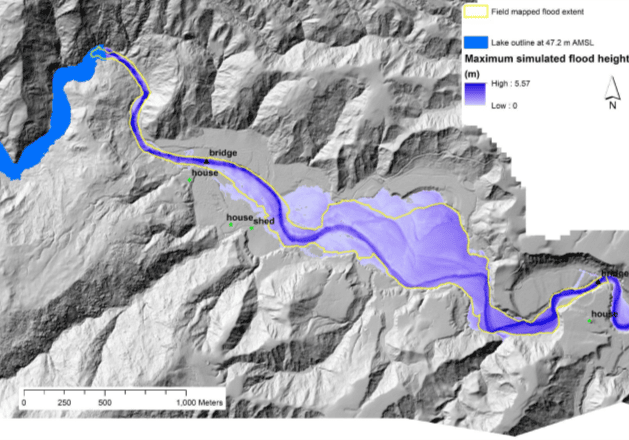
Regine Morgenstern, Andrea Wolter, Chris Massey, Brenda Rosser, Simon C. Cox and Biljana Lukovic - GNS Science
Presented at The XIV Congress of the International Association for Engineering Geology and the Environment: Engineering Geology for a Habitable Earth, Chengdu, China, September 2023
This abstract and presentation summarizes a method for assessing longevity, failure modes and downstream impacts of landslide dams, illustrated by two detailed New Zealand case studies: the Kaiwhata (rainfall-induced) and Hapuku (earthquake-induced) landslide dams. These dams can pose a significant and catastrophic hazard to life, property and infrastructure, and the method allows the impacts posed by landslide dam and breach to be better understood and managed.
The assessment utilises the New Zealand Landslide Dam Database that includes 1036 dams, that contains mapped source area, debris trail, dam and lake. Attribute information includes dimensions and volumes; triggering mechanisms and dates; geological parameters; catchment and valley properties; and breach details. Most of the recent landslide dams in New Zealand have failed within the first year of their formation, often triggered by the first high intensity or prolonged rainfall – post dam formation – which caused overtopping.
Head Office
1 Fairway Drive,
Avalon 5010
PO Box 30-368,
Lower Hutt 5040
New Zealand